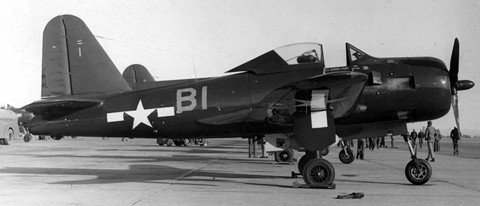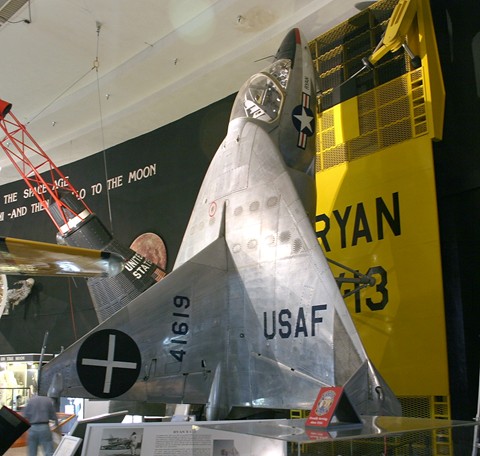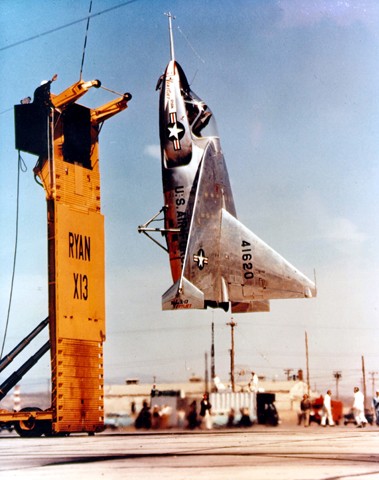|
X-13 VertijetLong before the AV-8 Harrier, there was the Vertijet. It was an attempt to propel a jet powered aircraft in a vertical takeoff and landing. It was more of a rocket with wings than a true aircraft, but it did actually fly. BackgroundJust after World War II, Ryan Aeronautical Company engineers wondered whether their FR-1 Fireball (a hybrid jet and propeller aircraft), which had a thrust-to-weight ratio of 1 at low fuel quantities, would take off vertically. See Fireball photo below courtesy of US Navy.
In 1947, the US Navy awarded Ryan a contract to investigate the development of a vertically launched jet fighter. This was part of a program to evaluate the feasibility of submarine-based aircraft. Ryan conducted remote controlled Vertical Take-Off and Landing (VTOL) tethered rig tests from 1947 to 1950, and in 1951 on a flying rig. Air Force ContractInterest in the tests by the US Air Force prompted them to award Ryan a contract in 1953 to develop an actual flying jet-powered VTOL aircraft. The main objective of the project was to demonstrate the ability of a pure jet to vertically takeoff, hover, transition to horizontal forward flight, and vertically land. It was given the Air Force designation X-13. Ryan’s designation was the Model 69. Two X-13A prototypes were built. The first of these (54-1619) is on display, complete with its launch trailer, at the San Diego Air and Space Museum. Photo below by Horace Sagnor.
Design CriteriaAt 23 ft, 5 in long, the X-13 was just large enough to accommodate the single place cockpit (with a tilted seat) and the 10,000 lb thrust Rolls-Royce Avon turbojet. The high mounted delta wing of the aircraft had a wingspan of only 21 ft and was capped with flat endplates. On the underside of the nose was mounted a hook and a short pole for gauging distance from the trailer. The hook was used to hang the Vertijet from the vertical trailer bed landing platform. After the aircraft was secured vertically, the trailer was lowered to horizontal and then used to transport the aircraft on the ground. Pitch and yaw control in hover were provided by vectored engine thrust. Roll control was provided by "puffer" jets mounted outboard of the wingtips. It FliesThe first prototype (54-1619) was fitted with temporary landing gear and made its first horizontal flight on December 10, 1955 to test its aerodynamic characteristics. It made full horizontal to vertical attitude conversions and back again at altitude. Later, the landing gear was replaced with a tail mounted framework that held it in a vertical attitude on the ground. Using this rig, hooking practice was conducted. On May 28, 1956, it was flown from the ground in a vertical position to test its hovering qualities. The second prototype (54-1620) completed the first full-cycle flight of a Vertijet at Edwards AFB, California on April 11, 1957, when it took off vertically from its mobile trailer, angled over into a horizontal attitude, and flew for several minutes. See photo below courtesy of US Air Force.
The X-13 then transitioned to vertical flight and slowly descended back onto its trailer and landed. On July 28-July 29, 1957, the X-13 was demonstrated in Washington, D.C. It crossed the Potomac River and landed at the Pentagon. End of the LineThe Air Force chose not to continue development of the Ryan X-13 Vertijet because of the lack of an operational requirement. If you wish to see the second prototype (54-1620), it on display at the
National Museum of the United States Air Force
in Dayton, OH. Navigation IndexReturn to the top of this X-13 Vertijet Page
|



